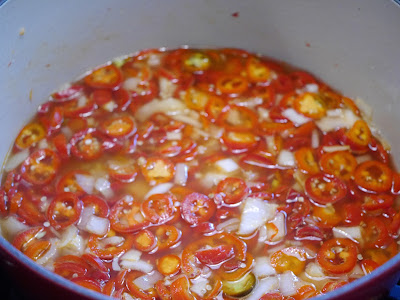 |
| A guidebook for those interested in medical marijuana. Follow Foods For Long Life on Facebook and Pinterest. |
Medical Marijuana
As of this writing, medical marijuana is legal in 23 states and in Washington DC. Each state has its own laws about how much usable marijuana you can possess and how many plants you can grow. I'm sure a year from now, this number will be higher and hopefully it will also be decriminalized by the Federal Government sooner than later. Living in Sebastopol, California, where our ex-mayor started the medical marijuana clinic, medical marijuana is quite commonplace. However, it's extremely difficult to find good information from qualified doctors with regard to how to use it, how much to use, and what strain to use for a particular medical condition. Michael Backes, in his book Cannabis Pharmacy, fills the gap with an excellent guide for both patients and physicians on the uses of cannabis as medicine.
Historical Context
Cannabis has a long and remarkable history which Backes covers in the first chapter. Many of the reservations people have about cannabis stems from the fact that it's illegal as far as the federal government is concerned. But it's interesting to know that as far back as 4,700 years ago, cannabis was considered a very important herbal remedy by the Chinese Emperor Shen-Nung. It makes you wonder why we are still debating this.
The Cannabis Plant
Even if you "inhaled" in college, you may not know a lot about the actual cannabis plant and the 700 plus chemical compounds such as THC (tetrahydrocannabinol), CBD (cannabidiol), various terpenoids, and others compounds that work together as a whole plant to provide various medical benefits. Backes gives a basic overview about the plant itself, how the medicinally active resin resides in the trichomes in the female plants, and how these compounds work in our body's endocannabinoid system.
There are many ways to use medical marijuana other than smoking a joint. Backes explains your many options which prepares you for the mind-blowing number of products you will find at your medical marijuana clinic.
An important chapter in the guide is how to deliver and dose medical marijuana. Backes writes, "the most appropriate medical approach is the one that provides the most precise dose, for the desired duration, in the appropriate form, with the fewest side effects." He discusses various delivery methods from smoking with a vaporizer to consuming edibles and tinctures, using oils for cooking, using topical creams and more with the advantages and drawbacks for each. He even includes recipes for making an alcohol tincture, making the Indian cannabis drink Bhang, and how to make infused cannabis oil for cooking.
And unlike the pro-marijuana advocates that claim cannabis cures everything without any ill effects, Backes is upfront about the adverse side effects of its use.
Varieties of Medical Cannabis
This is one of the most important sections in the book. Just as you wouldn't take a statin to treat an infection, you wouldn't take just any strain of cannabis to treat a specific condition. Variations in the amounts and ratios of THC to CBD as well as variation of terpene content make each variety of cannabis a different medicine. Backes takes you through a number of varieties from Afghan to White Widow, their medical uses and characteristics. When you walk into a medical marijuana clinic, you will find dozens of jars containing different strains of cannabis. They will have different tastes, aromas, potencies of CBD vs THC, duration of effects, amount of psychoactivity, amount of analgesic effect, whether it relaxes your muscles, stimulates or sedates. This chapter spells all that out for you along with other interesting notes and medical uses. For example, Backes writes about the strain LA Confidential:
"LA Confidential is a great pain medicine, as good as any cannabis variety gets. Patients report that it is also effective for calming flare-ups of Crohn's disease and irritable bowel syndrome. Low doses of LA Con are used to treat anxiety and slightly higher doses can help agoraphobia. It is also used for seizure disorders and migraines, because of its high micron and linalool content."
Medical Uses of Cannabis
I thought this was also an extremely helpful section of the book. Backes discusses many ailments where cannabis has been used or has shown to be effective for relieving symptoms and also discusses those where cannabis has not been as effective or where more research needs to be done. For each ailment he provides:
A description of the disease
How effective cannabis is for treating it (and he's quite honest about this one, not claiming that it works for everything).
The mechanism by which cannabis helps the condition.
Information on the effective dosage.
Best methods of ingestion.
Specific, popular varieties of cannabis that have been used to treat the condition.
Summary
It may be a while before medical cannabis is available to everyone and it will be an even longer time before there will be sufficient integrative doctors who will know how to prescribe it to you. So if you have a medical condition that you think might be helped by using medical cannabis and you want to learn more about it, this is a great place to start.
Watch Michael Backes' excellent uTube video for more information.
























